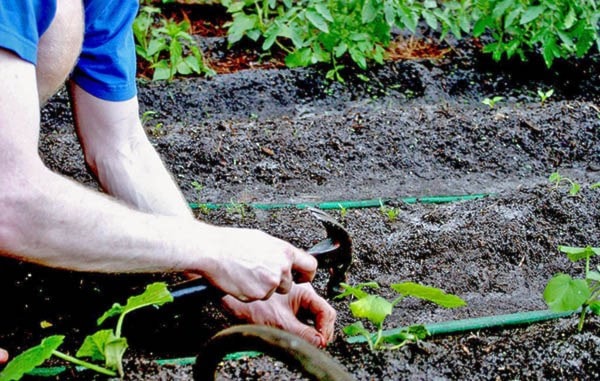Here we are just part way through summer and our gardens have been under a great deal of stress from the intense heat, lack of significant rain and water restrictions. The little bit of rain that has fallen recently is not nearly enough to relieve the trauma our plants are experiencing. How do we get them back on track so we can enjoy not only colour but also healthy trees and shrubs and fabulous food gardens? Well here are 10 tips that will help revive your plants.
No plants are immune in this heat, so within the water restrictions of your area, water everything as deeply as you can. This is especially true for plants against your home on the south or west side and yes, even your shade and flowering trees. Trees are more important than we realize and at the moment they need some extra help from us. Cedar and other hedging plants are shallow rooted and they have been under extreme stress. Use a soaker hose and leave it run until the water penetrates down to the roots. If you have to hand water, use a 1000 hole nozzle and water thoroughly and deeply to saturate the roots. This is critical.
All our rhododendrons, azaleas, camellias and other broadleaved plants are also shallow rooted and need water as soon as possible, especially around the drip lines. A 3” (7.5cm) layer of fir or hemlock bark mulch would help hold in the moisture.
Many of our fruit trees are dropping fruit because of moisture stress. Some apples are even scalding or burning. A deep watering around the drip line is very important. Small fruits, like currants and gooseberries, and especially blueberries, need immediate watering and monitoring.
Containers and baskets: We’ve been watering so much and leaching all the nutrients out of the soil, our plants are starved. Double feeding is now in order. First apply some slow-release fertilizer, like Osmocote 14-14-14 and then after each watering, feed with a 20-20-20 liquid fertilizer. You may also have to pinch and prune back tired foliage and blossoms, but in ten days you will get some amazing results. Only water containers when they dry out, and then water thoroughly. Feed right after a thorough watering – definitely not when plants are dry.
As for garden colour, heat lovers, such as zinnias, petunias, sun-loving coleus, portulacas and rudbeckias, perform best and are still in fairly good supply. It’s too early and too hot for fall pansies.
So many of our early ripening tomatoes are going black on the ends. This problem is called ‘blossom end rot’, and it is caused by a calcium deficiency. The easiest solution is an application of lime (approximately a handful) around the perimeter of each plant.
Already we have mildew on our cucumbers and squash simply because we let water get on their foliage. Remember to water the roots only, not the leaves. Cut off the worst affected leaves and for the rest, treat with garden sulphur or ‘Defender’ if you wish to stay organic. This should be done weekly until the problem is cleaned up.
The cute little white cabbage moth flitting about, particularly around your brassicas, will be laying eggs and subsequently their larvae will be devouring the leaves. Try the organic B.T.K. as a weekly spray, and it will keep all your cabbages and cauliflowers clean.
If you’ve grown garlic, now is the time to harvest. Lift it, cut the stem back to 3-4” (7-10cm) long and let it dry out in a cool dark room with good air circulation. It is ready to eat fresh, but save some cloves for planting in September.
We’re still early in the year for replanting food and flowering plants. All mid-season vegetables can be planted now as well as all lettuces, spinach and beets, etc. Starter plants are best, but some can still be planted from seed.
